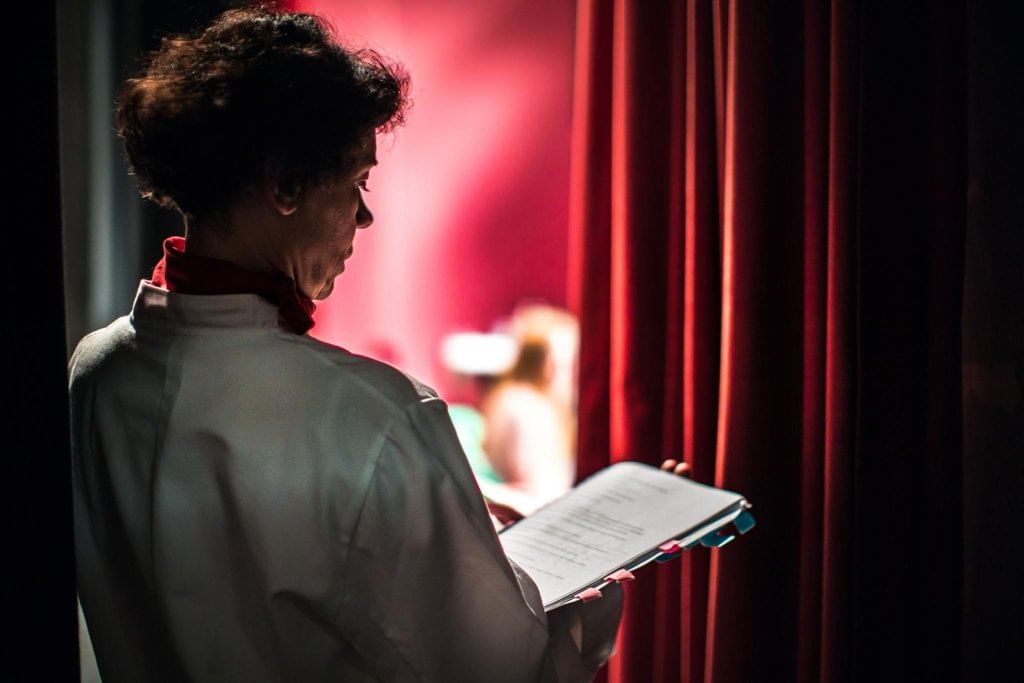Class 8 Exam > Class 8 Notes > Arts (Kriti) Class 8 - New NCERT > Chapter Notes: One Stage, Many Scripts
One Stage, Many Scripts Chapter Notes | Arts (Kriti) Class 8 - New NCERT PDF Download
| Table of contents |

|
| Introduction |

|
| Scripts for Stages |

|
| Play Scripts in Ancient India |

|
| Types of Scripts |

|
| Genres |

|
Introduction
Writing serves as a crucial tool for expressing and recording ideas. It helps clarify thoughts, build creativity, and share knowledge across generations. In different forms, writing connects all forms of communication, from essays to movies and TV shows. Scripts are essential for any performance.
Scripts for Stages

- Play Scripts: Scripts written for stage performances, film, or television. They vary in structure, style, and purpose depending on the type of performance.
- Importance: Understanding different types of play scripts helps in appreciating the diversity in theatrical storytelling.
- Genres in Scripts: Plays can be categorized into different genres based on their themes, mood, and structure.
Play Scripts in Ancient India
- Ancient Indian drama writers used the term "rupa" or "rupaka" for drama, combining poetry and dialogue.
- Nāṭyaśhāstra: An ancient Indian text that discusses various types of scripts. The first performance described in Nāṭyaśhāstra is based on the Amrita Manthana (churning of the ocean), a significant event involving the Devas and Asuras.
Types of Scripts
Ancient (Nāṭyaśhāstra) Classifications
- Nataka: 5–10 acts; based on kings/divine beings; themes of love, heroism, or pathos.
- Prakarana: Up to 10 acts; invented plots based on society.
- Bhana: One-act; invented plots about rogues and heroism.
- Prahasana: One-act; humorous, comical in nature.
- Dima: Four acts; based on popular stories, often involving Devas and Asuras.
- Vyayoga: One-act; heroic stories, non-comical.
- Samavakara: 3–4 acts; based on traditional stories of Devas and Asuras.
- Anka (Utsrishtanka): One-act; based on Karuna rasa (pathos).
- Ihamrga: Four acts; mixes popular and pauranik stories with fiction.
- Veethi: One-act; 2–3 characters; performed anywhere.
Modern Structures
- One-act plays: 10–30 minutes; focus on a single dramatic conflict.
- Two-act plays: Midpoint climax; stakes rise or protagonist’s goal changes.
- Three-act structure: Setup, confrontation, resolution (common in films/TV).
- Linear, cyclical, non-linear: Storytelling with flashbacks or non-chronological order.
- Adapted scripts: Based on novels, books, poetry, short stories, or historical events.
Question for Chapter Notes: One Stage, Many ScriptsTry yourself: What type of play is called 'Bhāna'?View Solution
Genres
Genres help categorize works of art based on their content and style. The classification provides a framework for understanding and organizing the art.
Popular Genres
- Tragedy: Serious themes; flawed protagonist falls due to fate, mistakes, or society.
- Historical Drama: Based on historical events/figures.
- Comedy: Humorous dialogues, misunderstandings, exaggerations, happy endings.
- Musical: Combines songs, rhythmic dialogue, and dance.
- Melodrama: Exaggerated emotions; clear distinction between heroes and villains.
- Mystery: Puzzle/Crime-solving; solution revealed at the end.
- Experimental: Breaks traditional storytelling; abstract/surreal themes.
- Fantasy: Magical elements, imaginary worlds.
- Docudrama: Dramatized reenactments of real events.
Mixed Genres
Works may combine genres, e.g., Tragicomedy (tragedy + comedy).
Importance of Genre
- Provides a framework to understand and interpret texts.
- Prevents misinterpretations.
- Helps organise works.
- Example: Libraries and bookstores classify by genre.
- Applies to all forms of art:
- Music/Dance genres: Classical, Folk, Contemporary, Semi-classical.
- Visual Arts categories: Portrait, Landscape, Still life.
Question for Chapter Notes: One Stage, Many ScriptsTry yourself: What is a genre?View Solution
The document One Stage, Many Scripts Chapter Notes | Arts (Kriti) Class 8 - New NCERT is a part of the Class 8 Course Arts (Kriti) Class 8 - New NCERT.
All you need of Class 8 at this link: Class 8
|
76 docs|19 tests
|
FAQs on One Stage, Many Scripts Chapter Notes - Arts (Kriti) Class 8 - New NCERT
| 1. What are the main genres of drama? |  |
Ans.The main genres of drama typically include tragedy, comedy, and tragicomedy. Tragedy often deals with serious themes and involves a downfall of the protagonist, while comedy focuses on humor and often ends happily. Tragicomedy blends elements of both, presenting serious themes with a lighter tone.
| 2. How does the structure of a play differ between genres? |  |
Ans.The structure of a play can vary significantly between genres. For instance, a tragedy usually follows a five-act structure with a clear exposition, rising action, climax, falling action, and resolution. In contrast, comedies may have a more flexible structure, often emphasizing quick pacing and comedic timing, while still maintaining a coherent narrative arc.
| 3. What are some famous examples of each genre of drama? |  |
Ans.Famous examples of tragedy include Shakespeare's "Hamlet" and Arthur Miller's "Death of a Salesman." For comedy, notable works include Molière's "Tartuffe" and Oscar Wilde's "The Importance of Being Earnest." An example of tragicomedy is Samuel Beckett's "Waiting for Godot," which combines serious themes with absurdist humor.
| 4. How have historical events influenced the development of different drama genres? |  |
Ans.Historical events have profoundly influenced the development of drama genres. For example, the rise of realism in the late 19th century was a response to societal changes and the complexities of modern life. Similarly, the global conflicts of the 20th century led to the emergence of absurdist theatre, reflecting the chaos and absurdity of human existence during those times.
| 5. What role do characters play in different genres of drama? |  |
Ans.Characters play a crucial role in all drama genres, but their development and function can differ. In tragedy, characters are often deeply flawed and face moral dilemmas, leading to their downfall. In comedy, characters may be exaggerated or archetypal, serving to create humor and engage the audience. In tragicomedy, characters may navigate complex emotions, reflecting the duality of human experiences.
Related Searches















